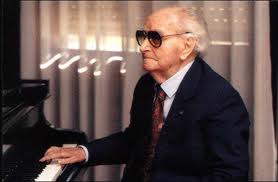|
Symphony
SRS SEASON ENDS WITH RESOUNDING TA-TA-TA-BANG
by Terry McNeill
Sunday, June 1, 2025
Symphony
YOUTHFUL VIRTUOSITY ON DISPLAY AT USO'S MAY CONCERTS
by Peter Lert
Saturday, May 17, 2025
Symphony
MYSTICAL PLANETS AND LIVELY GERSHWIN ORTIZ AT FINAL SRS CONCERT
by Peter Lert
Sunday, May 4, 2025
Symphony
VSO'S CONCERT MUSIC OF TIME, MUSIC OF PLACE
by Peter Lert
Sunday, April 27, 2025
Choral and Vocal
VOCAL ELEGANCE AND FIRE AT THE 222'S RECITAL APRIL 26
by Pamela Hicks Gailey
Saturday, April 26, 2025
CANTIAMO SONOMA SINGS AN INSPIRED GOOD FRIDAY MOZART REQUIEM CONCERT
by Pamela Hicks Gailey
Friday, April 18, 2025
DRAMATIC SHOSTAKOVICH SYMPHONY CLOSES PHILHARMONIC'S 25TH SEASON
by Terry McNeill
Sunday, April 13, 2025
LARGE COLLEGE OF MARIN AUDIENCE GREETS STOPHER ARTISTRY
by Terry McNeill
Saturday, April 5, 2025
Chamber
FRISSON DELIVERS SHIVERS OF DELIGHT
by Abby Wasserman
Sunday, March 30, 2025
OLD AND MOSTLY NEW IN SRS MARCH CONCERT IN WEILL
by Peter Lert
Saturday, March 22, 2025
|
 |
 Spanish Composer Joaquin Rodrigo |
DYNAMIC DIEMECKE LEADS BOUYANT RODRIGO AND DISSONANT CHÁVEZ AT SYMPHONY CONCERT
by Robin Brown
Saturday, January 22, 2011
A nearly full house of Santa Rosa Symphony concert goers wildly applauded guest conductor Enrique Arturo Diemecke Jan. 22 at Wells Fargo Center. Piazzola's “Tangazo” stood out as the most enjoyable score of the evening, and the final concert the set Jan. 24 is recommended.
Mr. Diemecke uses his whole body in conducting, including a close golpe (flat foot beat) and his entertaining signature "Ta-Dah" with arms extended laterally. He mimed a bowing violin and once used only fingertips to close an exciting pianissimo. Undoubtedly in demand for operas, Mr. Diemecke is a baton-less dancer, sexy in the most loveable, music-marriageable sense. His downbeat rarely has a bottom so players must carefully listen to each other. Surprisingly the conductor’s unique podium techniques were effective because the Symphony sounded even better than when I heard it last season, and his infectious zeal goes beyond conducting.
Women guitar soloists are rarissimo and I recall with sadness the guitar virtuoso Ida Presti's early death. The concert’s soloist for this evening, Sharon Isbin, was tastelessly advertised and attired in quasi country and western glitz. She came, saw but did not conquer because Mr. Diemecke led the Symphony to a peak performance, easily stealing the whole concert limelight. Ms. Isbin is a good professional guitarist but her nylon-strung classical guitar's modest voice can't compete with an orchestra tutti so she required directional microphone amplification. She won the audience in the Rodrigo’s Concierto de Aranjuez but, lacking of awareness or taste, Ms. Isbin chose to encore and to verbally pitch her CD lobby-sales and play a folksy arpeggio in an on-and-on solo encore. People applauded but not as enthusiastically as after the lovely, accessible Rodrigo masterwork. In the Concierto Ms. Isbin played well but lacked the incisive rasqueado strum of flamenco master accompanists. One closing rasgueado was actually zesty. Rodrigo is one of Spain's famous regional folk-music-inspired composers and has stated that his lovely, melancholic Adagio movement was born of his great love for his wife who at the time of composition was hospitalized in Paris. The royal castle garden in Aranjuez was their honeymoon site and Rodrigo became partially sighted at an early age and created mostly Braille music scores.
Ms. Isbin's performance technique confirms Andrés Segovia's advocacy of footstool under supporting leg, guitar-neck angled up to favor fingering wrist, both hands and finger positions. The great Spanish guitarist opened the world market for solo guitar classics by playing his many fine transcriptions, improving fingerings and encouraging composers. He encouraged, fingered and premiered in San Francisco a second Rodrigo guitar concerto, one of three he wrote from 1966 to 1982. One of Ms. Isbin's teachers, Oscar Ghiglia (of Rome), played his first Berkeley solo concert after assisting Segovia in the UC Berkeley Guitar Master Class.
The opening Suomalainen Tango by Pablo Ortíz (from Buenos Aires, 1956) remains a mystery to me. The composer who was in the audience stood to acknowledge the applause which then grew louder. Perhaps the orchestra players lacked rehearsal time for the Tango's counter-accents, but later they executed counter-accents well in the Piazzolla Tangazo (big tango) for Orchestra, also known as Variations on Buenos Aries. This was the highlight of the concert - bright, full of delightful surprises, a musician's joy by another of Argentina's sterling musicians! In the Rodrigo the Adagio movement competed favorably in execution.
Closing the concert was Chávez' Symphony No. 4, Sinfonía Romántico, a 21-minute work from 1953. This was a very late-romantic, highly dissonant, dense and darkly puzzling score. Mr. Diemecke, from Mexico, has often conducted this piece and drove his interpretation with a force that Chávez would have appreciated. The composer moved to New York after building “Sinfonía Nacional” and eventually heading the national conservatory in Mexico City where he had originally studied. Did this Chávez work presage a more violent Mexico? This Symphony concert and my questions close on a troubled note.
Robin Brown is Music Director of Santa Rosa’s Flamenco Arts, has taught guitar at the San Francisco Conservatory and Chico State University, and studied guitar with Alilio Díaz.
|
